AUCTORES
Globalize your Research
Review Article | DOI: https://doi.org/10.31579/2690-1919/415
1Department of Eastern Medicine, Government College University Faisalabad-Pakistan.
2Faculty of Medical Sciences, Government College University Faisalabad-Pakistan.
3DISAE Research Group. University of La Laguna. Spain.
4Molecular Nutritional and Biochemistry Laboratory, University of Peradeniya, Sri Lanka 5Department of Cell Biology, Center of Research and Advanced Studies of the National Polytechnical Institute, Mexico City, Mexico.
6Department of Pharmacology and Toxicology, Faculty of Pharmacy, Umm Al Qura University, Makkah, Saudi Arabia.
7Department of Molecular Biology and Genetics, Faculty of Science and Art, Bingol University, Bingol, 1200, Türkiye.
8Department of Pharmacology and Clinical Pharmacy, Universitas Andalas, Indonesia.
9Department of Neurology, Neuroceuta, (Virgen de Africa Clinic), Spain.
10Department of Psychiatry, Patton State Hospital, USA.
11Department of Pharmacy, University of Pisa, Via Bonanno, 6, I-56126 Pisa, Italy.
12Faculty of Health and Life Sciences, INTI International University, 71800, Putra Nilai, Negeri Sembilan, Malaysia.
13Department of Sociology & Criminology, University of Sargodha, Sargodha.
147BCNet International Working Group, IARC/WHO, Dakar –Senegal.
15Department of Medical Laboratory Science, Faculty of Allied Health Sciences, Bayero University, Kano, Nigeria.
16Pharmacy, Bangabandhu Sheikh Mujibur Rahman Science and Technology University, Bangladesh.
17Federal College of Forest Resources Management Maiduguri Borno State Nigeria.
*Corresponding Author: Department of Eastern Medicine, Government College University Faisalabad-Pakistan.
Citation: Muhammad Akram, Abid Rashid, David Pérez-Jorge, Fahad S. Khan, Shafiq U. Rehman, et al, (2024), Targeted Applications of Algal Species in Bioremediation Strategies for Environmental Pollution, J Clinical Research and Reports, 16(4); DOI:10.31579/2690-1919/415
Copyright: © 2024, Muhammad Akram. This is an open access article distributed under the Creative Commons Attribution License, which permits unrestricted use, distribution, and reproduction in any medium, provided the original work is properly cited.
Received: 27 August 2024 | Accepted: 10 September 2024 | Published: 20 September 2024
Keywords: utilisation of algal; bioremediation; polluted environment; polycyclic hydrocarbon; bioremediation of algae
There is a lot of excitement about the use of biological treatment such as an impressive new product called phytotherapy, which uses wood to keep things safe by removing toxins or their habitats. Research on the growth of seeds of common environmental weeds and the bioaccumulation/biodegradation of natural exotic biological species, whose wide diffusion in agriculture presented a major challenge. The effectiveness of green has been linked to significant mineral overload, including xenobiotic inhibition. Because microalgae can treat carbon dioxide, there has been a lot of interest in using them for recycling and cleaning purposes in recent years.
Plants, herbs, spices and weeds are progressively eliminated around the world. Although phytotherapy sales exceeded $300 million in the United States in 2007, sales continue to decline in Europe.
Generally speaking, there is a lot of excitement around the use of biological treatments such as an impressive new product that uses wood (Phytotherapy) to keep them safe by eliminating poisons or habitats. Some studies have described territorial planning strategies for lands, rivers and lakes (Scott et al 2010). Additionally, the effectiveness of Green's water management programs has been linked to significant mineral overloading, including xenobiotic inhibition.
Weed infestation shares unique characteristics with biofuel pollution. This fine biological treatment capacity is necessary to sustain the plant (Klinthong et al 2015). All over the world, weeds, herbs, spices and plants are gradually eliminated. The “near-to-commercial” herbal medicine market is growing rapidly, which is helping it to thrive. Although phytotherapy sales in the United States exceeded $300 million in 2007, sales in Europe continue to decline. A recent article states that the use of microalgae has recently increased to support the return of regular growth.
Oil leak
A buildup of hydrocephalus in animals can cause serious problems that threaten the reliability of many water systems, as well as health issues for humans (Kurade et al., 2016). Each year, between 2,000,000 and 200,000 square meters of low-temperature oil are produced, and it is estimated that 600,000 square meters of this low-temperature oil are generated (Jin et al., 2012).
(Bioremediation of Polycyclic Hydrocarbon Bottoms)
Polycyclic Aromatic Hydrocarbons (PAHs)
The term "PAH" refers to polycyclic aromatic hydrocarbons, which are generally found in dirty environments such as grease and dirt. However, they can also come from organisms that have not been heated enough, such as oils in wood, grass, and manure. The PAH family of chemicals consists of strong pentacyclic molecules or at least two benzene rings arranged in different auxiliary systems. These materials, known as hydrophobic materials, are hard enough to resist Earth's low-water activity. Polycyclic aromatic hydrocarbons, which are released into the atmosphere during oil extraction, provide many components of PCP, including low water noise, high noise, low pressure, and high toxicity (Wild et al., 1991). Metals that travel with living algae cells are collected from biologically moving vehicles. They are imaginable as quite healthy metals or as typical agents of destruction due to their multi-layered cell walls and various ecological growth classifications. Green development can be induced in photosynthetic eukaryotes that are commonly observed in freshwater environments and near-sea locations. For instance, Spirogyra algal species have demonstrated migration efficiencies of Q (II) ranging between 58 and 85% (El-Sheekh et al., 2021). Collarpalentilifera is an effective biosorbent for the release of various metals into aquatic systems, as well as dried green microorganisms (Kumar et al., 2020). The ecological expansion of the planet Turbinarioarnet and the green development of Ulothrixzonata are the two most successful strategies in the exploitation of surplus metal. In terms of sulfate expulsion, it is believed that alkalinity is produced by reducing microorganic sulfate and that metals can be deposited in the system by the removal of metal sulfides (Kumar et al., 2005). Properly scaling up carbon sources is crucial to the progress of sulfate-reducing bacteria (SRB) because water treatment facilities (WFD) conditions are often carbon-limited. To ensure the success of bioremediation processes (BPRS), supplements are required. A reduction in sulfate and metal deposition is also necessary for strong development and resistance. These systems and guidelines present principles for creating practical improvements in the disposal of stationary wastewater that pose risks to human health and have unusual natural consequences (Zhang, 2020). To overcome progression problems in wet soils, it is immediately recommended to use lakes of non-sessile algae to check viability and raise the pH. The experiment findings indicate that mixed cyanobacteria and ecological growth (MN) are naturally attracted to refuges. MN was removed for these conditions using biomass uptake, high pH precipitation, and stabilization methods (Martinez-Jeronimo et al., 2008). The findings of these previous investigations have highlighted the promising future of acid mine drainage (AMD) and bioremediation-based treatment of wastewater growth (Perelo, 2010). Green growth can not only force the mediated release of toxins but also produce oxygen economically. The objectives of therapeutic research on AMD are favored by the presence of many species such as Spirulina sp., which work very well to remove heavy metals from AMD (El-Sheekh & Abou El-Souod, 2016). Similarly, AMD is associated with a noticeable increase in syphophilic acid in the lifestyle, but nothing is known about its potential therapeutic applications. Cost-effectively, marine plants can extract minerals from caustic and contaminated wastewater. Most of the studies concluded with the evaluation of the developmental groups of microalgae species; however, some green growth strains have been shown to be effective in removing heavy metals from wastewater or AMD (Amores-Sanchez et al., 2015; Tang & An, 1995).
•The Ability of Ecological Growth
Regarding AMD processing, the possibility of ecological growth as essential components of wetlands cannot be ignored due to the rapid flux of minerals through bioaccumulation. When designing bioreactor buildings that are not used for AMD sulfate discharge, this capability plays an important role. A hidden bioreactor frame functions as a large channel for carbon released when AMD enters the surface, travels through a layer of building obstacles, and leaves the frame. Green growth and other marine plants are important components of the bioreactor base stage. Spirulina sp., for example, has shown rapid absorption of various minerals, primarily through direct contact with the AMD flow, which significantly contributes to the treatment of profuse AMD within 30 minutes. Following this, green growth begins to exhibit productive results (Altamirano et al., 2004). However, these types of green growths painstakingly create artificial antacid chemicals that de-acidify AMD by producing inorganic bicarbonate salts. Extensive research has been conducted to identify suitable macro- and microalgae for use in bioremediation. For instance, a Chlorella strain was prepared to generate 11.24 mg Cd²⁺/L with a removal efficiency of 65% from an initial concentration of 5.62 mg Cd²⁺/L, while Chlorella and Scenedesmus strains were effective against 20 mg Cr⁶⁺/L, with removal efficiencies of 48% and 31%, respectively (Bodour et al., 2003; Al-Turki, 2009). The bio-absorption of essential minerals from algae species in AMD from Brazilian coal mines has been thoroughly evaluated. It was found that 6.3% of the biomass in the algae could acquire uncommon large minerals, with ingestion capabilities for Fe > Al > Ca > Mg > Zn > Mn > Cu. The most studied algae species include Microspora, Eunotia, Euglena, Mougeotia, and Frustulia, with Microspora being the most preferred (Berglund et al., 2001; Atlas, 1991). It has been demonstrated that these acidic algae, whose pH ranges from 2.9 to 4.1, are effective in AMD treatment. A study using a mixing framework consisting of a funnel-shaped microalgae reactor (PIMR) and an AMD iron-based microalgae reactor revealed that iron excretion is crucial as high iron concentrations can affect biomass metabolism. Nephroselmis sp., in particular, has been found to effectively remove basic minerals and is suited for AMD that has already undergone preliminary treatment. The PIMR framework proved more effective for demineralization and microalgal growth in pre-treated AMD effluents compared to HRAP and SRB systems, providing greater protection against environmental contamination despite having less activity space (Bamforth & Singleton, 2005; Borja et al., 2005). Ben and Baghour evaluated the ability of fourteen algae species to manage pollutants from AMD and other sources of pollution, finding that only "hyper-aggregator" or "hyper-spongy" species showed high selectivity for specific minerals. The results underscored the limited research on the use of particular microalgae species for AMD bioremediation. This research highlighted the potential of green technology for AMD biological therapy, demonstrating the ability of microalgae to eliminate heavy metals such as copper, zinc, iron, lead, nickel, manganese, and sulfur, provided that the pH is appropriately managed (Aken et al., 2010; Bamforth & Singleton, 2005). Recent publications emphasize the potential hazards of natural medicine and its effects under certain conditions. The presence of pharmaceutical pollutants in water could lead to permanent impacts on marine habitats, including hormonal disruptions and other adverse effects. As industries continue to disperse pollutants, including medications, into the environment, their active ingredients can be consumed and cause unintended ecological consequences (Altamirano et al., 2004; Atlas, 1991).
Pollutants Free of Pollutants (POPs)
Man-made substances known as Persistent Organic Pollutants (POPs) are harmful to the environment, bioaccumulate in living things (from food, water, and air), and have the ability to be harmful while still fostering global concerns about their impact. Due to anthropogenic activity, these substances end up in the soil. The most critical pollutants include pesticides (such as aldrin, chlordane, DDT, dieldrin, endrin, heptachlor, mirex, and toxaphene), essential oils like hexachlorobenzene (HCB), and polychlorinated biphenyls (PCBs), along with their consequences (vapors and furans) (Aken et al., 2010; Borja et al., 2005). Clinical applications of bioremediation have explored various methods to address these contaminants, including the use of specific plants such as Egeria naas, Limnophila sessiliflora, Cabomba caroliniana, and Iris pseudocorus (Chaney et al., 1997). Research into Venlafaxine-containing plants showed limits ranging from 29% to 62% of their overall effectiveness, with a predicted lifespan of 96 hours (Campos et al., 2008). In 2014, studies investigated chemical removal from wastewater, noting that forty-eight of fifty-two items used in experiments were partially effective. Despite a brief eight-day warning cycle before irrigation, efforts to achieve wastewater recovery using medical devices and Fenton imaging therapy led to a reduction in treatment load, though aqueous toxicity was not fully resolved. Researchers also employed carbon dioxide to purge water of impurities, although the results supported the process described in the literature without completely addressing spoilage (Burritt, 2008; Cerniglia et al., 1980). Green growth presents exciting possibilities for the bioremediation of contaminated water bodies. Notable green growth groups with this potential include cyanobacteria, which are greenish-blue, and macroalgae. The term "cyanobacteria" is often used due to their microscopic nature and prokaryotic origin, which makes them effective in metal accumulation (Brusseau, 1998). These growths are crucial for environmental regeneration and excel in metal collection through two main stages: physical adsorption or particle trading, which is a rapid and reversible process, and chemisorption, which occurs more slowly. Dead cells can accumulate metal particles to a greater extent than living cells, a process known as biosorption (Chun et al., 2013; Cerniglia, 1992; Bodour et al., 2003).
Biorimedium
The biosphere has become significantly more contaminated with radioactive and hazardous elements since mechanical disruptions began. Water in and around Canada, Quebec, and Montreal has been tainted for over 20 years by sewage, toxins, and pesticides, primarily from the St. Lawrence River (Gilden et al., 2010). According to the Centers for Disease Control (CDC), hazardous materials and pollutants have caused nearly 1,400 US beaches to close, and an additional 1,700 people were affected (Green et al., 1999). Furthermore, hazardous medical supplies disposed of in Mexico have impacted the Texas shoreline around Corpus Christi, contributing to the erosion of parts of the Texas coast (Hong et al., 2008). The primary sources of this pollution include the use of petroleum products, metal ore extraction and processing, wastewater, compost, pesticides, and municipal waste (Glass, 2005). Metals, defined as hard metals with a density greater than 5 g/cm³, have raised significant environmental concerns. Rocks, being durable, often contain a broad spectrum of important metals. Key elements that may be harmful to plants include iron (Fe), manganese (Mn), zinc (Zn), copper (Cu), molybdenum (Mo), nickel (Ni), cobalt (Co), and vanadium (V). Additionally, harmful metals in decreasing order of concern are lead (Pb), cadmium (Cd), aluminum (Al), mercury (Hg), chromium (Cr), silver (Ag), arsenic (As), and tin (Sn) (Huang et al., 2010). Metals can be solid particles or broken down into free-hydrated particles and complex particles that combine with naturally occurring ligands such as proteins or humic acids, or they can combine with free-hydrated particles like amines. Some synthetic compounds may accumulate or degrade to levels that pose risks to the environment or public health (Burritt, 2008). Bioremediation, which involves breaking down environmental contaminants or preventing pollution, is a strategy used to address natural toxins. Most bioremediation approaches involve employing bacteria, either common strains or genetically modified organisms, to improve wastewater quality (Horsburgh et al., 2002; Cerniglia, 1992). Bioremediation aims to sterilize contaminated soil, water, or air using microorganisms and other organisms, thus offering opportunities for creating sustainable and efficient wastewater treatment techniques (Cerniglia et al., 1980; Guiliano et al., 2000).
Biosorption: An all-encompassing term for the free bonding (absorption) of surplus minerals in natural particles, which involves particle trading, chelation, or complexation. This process can be explained as metal particles reacting quickly and reversibly with helpful polymer building blocks that divide cells. The unpredictable nature of adsorption onto extracellular biopolymers is sometimes referred to as "bio uptake" (Kauss et al., 1973). Within the context of living or deceased organic cell material, the term "bio-absorption" generally refers to the integrity of the accumulation approach (Madadi et al., 2016).
Bioaccumulation: This process describes how large animals, such as microbes, dynamically recover minerals as they enter live cells (Jin et al., 2012). The session is moderate and ongoing as live organisms consume and interact with various substances (Kurade et al., 2016)..
Green growth is a crucial intermediary. Living plants are frequently likened to solar-powered siphons that can concentrate various substances (Hong et al., 2008). By removing necessary minerals from the soil—minerals that are vital to plant growth and development—all plants can be properly hydrated. These minerals include magnesium, copper, manganese, iron, and potentially nickel. Likewise, certain plants may collect excess minerals whose organic strength is unknown. Among them are Cr, Pb, Ag, Hg, and Cd (El-Sheekh & Hamouda, 2013; Luo et al., 2015). Most plants can become hazardous when these excess minerals are combined in an irregular way. Different plant species develop the capacity to accumulate these minerals in an unexpectedly high fixation freely (Li et al., 2019; Takáčová et al., 2014). Information about the viability of developing novel techniques to remove minerals from phototrophic water is available. These photosensitizers can be grown effectively in a micronutrient medium without sugar, although they are less safe and growth-sensitive than the minerals needed for growth (Patel et al., 2020; McGenity et al., 2012). Three processes basically allow these living organisms to quench minerals: bio-absorption, extracellular deposition, and biopolymers (Ghasemi et al., 2011; El-Sheekh et al., 2013). Unlike conventional methods, green farming as a crucial mineral absorber offers feasibility, opportunity, and options to clean up the planet, the county, and the surrounding seas (Walker et al., 1975; Otto et al., 2010). Because microalgae have a high capacity to accumulate damaged minerals, they have been employed to recover important minerals from the aquifer (Sutherland & Ralph, 2019). It has been discovered that phytoplankton affects metallurgy through surface interactions, demineralization, and the production of an extracellular material that is naturally occurring and has complicated mineral characteristics (Semple et al., 1999; Yan & Liu, 1998). The green structure's secretions may play a significant role in reducing the harmful consequences that follow by maintaining a low binding between free metal particles in the distinctive water (Avila et al., 2021). It has been demonstrated that, under some circumstances, cyanovate sends poly-hydroxamate side mirrors, which are experts in the synthesis of compounds containing solid metals. It is enhanced by a number of other eukaryotic organisms that grow green (Gattullo et al., 2012; Klekner & Kosaric, 1992). With regard to Green Lake's ultimate development, its biomass created considerable curiosity. Local green spaces that are small but productive bio-absorbers are Sargassum and Ascophyllum (Wang et al., 2019). Thus, a variety of arrangements of green spaces present chances for bioremediation. The use of green growth as mineral biosorbents to get beyond the present regulatory standards for eliminating harmful metals or recovering valuable metals is one of the more recent uses of green mineral bonds (Sutherland & Ralph, 2019). Furthermore, it is advised to keep an eye on river rats' levels of copper and mercury using green growth and living organisms (Hong et al., 2008). Alkaline base shields are being stretched because these tax havens have a number of benefits over recent standardization efforts, including:
Variation and suitability for widespread use.
Perseverance.
Choice of minerals required over base earth minerals.
Sometimes the ability of the mineral to reduce its concentration on drinking water principles (by bio-absorption).
Price freedom.
Sustainability.
The ability to remove pollutants without contributing harmful substances to the aquifer.
Ease of walking (El-Sheekh & Hamouda, 2013; Ghasemi et al., 2011).
Absorption
The term "bio-absorption" refers to the process by which a metal, metal alloy, or natural component releases particles from a system. Effective bio-absorbents are referred to as green growth. They can be used to break down minerals, just like cellular materials for biomass from both dead and living algae, such as polysaccharides (Narro et al., 1992; Olette et al., 2008). It's well known that algae biomass inactivates a lot of minerals (rays) (Salt et al., 1998). Algal biomass can be employed in the overall structure in a variety of ways, such as on its own, as a strong support, or to disperse the molecules for extraction or recovery from the mineral (Seeger et al., 2010; Sethunathan et al., 2004). For intracellular minerals, live biomass from an active cycle known as bio-evaporation is also appropriate if mineral storage is postponed (Wong et al., 2002; Schippers et al., 2000). Both living and non-living biomass are referred to as bio-absorption. Currently, the biomass of life is specifically impacted by biosynthesis. Microbial biomass can therefore be manipulated and abused more successfully than aggregation (Venosa et al., 1992; Wolfe and Hoehamer, 2003).The important features of measuring algal absorption are:
The purge process / cycles can be used to destroy toxic metals as well as before releasing liquid-rich radionuclides into the tank. Old biomass can even be collected and used for valuable minerals (Venosa et al., 1992; Watanabe, 1997; Olette et al., 2008).
The bio-absorption is a miracle quick with grabbing the hidden mineral from the undeveloped biomass (Wong et al., 2002; Narro et al., 1992).
Biological absorption usually includes ulcers, cell surface complexity, particles, or possible fine deposition. Artificial physical miracles, without the speed of things, are reversible (Schippers et al., 2000; Sethunathan et al., 2004; Neuwoehner et al., 2007).
Biological absorption is a developmental miracle (Watanabe ME, 1997; Nipper et al., 2001).
Absorption innovation focuses on lower labour costs, poor system viability, and minimal waste (Salt et al., 1998; Seeger et al., 2010).
Dynamic Connection
Microorganisms can quantify mineral biomass particles effectively at very close ranges, using both judicious awareness and "inferior" ways of organ donation. This kind of interaction, known as bioremediation, occurs often in both living and dead cells. But occasionally, "dynamic assembly" of mineral particles by live cells can be seen; these are especially reliant on the metabolism of living organisms. This kind of reaction was collectively referred to as bio-evaporation. Research has demonstrated that a variety of green growth forms can retain minerals in their liquid form. The concentration factor (CF), which is the ratio of the mineral concentration in life to this portion and occupied water, is one way that the concentration factor (CF) quantitatively communicates this indicator. This technique allows the excitability and green growth pressures of various minerals to be monitored. Mineral pollution is a major reaction to sea level decline, and certain factors have demonstrated that mineral corrosion is primarily caused by adulteration and surface absorption in green growth (Venosa et al., 1992; Voldner & Li, 1995; Watanabe et al., 2003; Watanabe, 1997; Wolfe & Hoehamer, 2003; Won et al., 1976; Wong et al., 2002).
The Potential Fate of Biomedicine
According to multiple sources, the cost of fostering unanticipated growth through widely adopted technologies is predicted to be a mere 400 billion rupees (Rosenberg et al., 1992). The mixture of solid minerals and organics XT. 4 is valued at 35.4 billion, whereas destinations containing heavy metals might cost 1.1 billion. Using current treatment breakthroughs, however, the modern system in situ, which has been described and detailed independently thus far, will cost over 10 billion rupees. This enormous cost issue has opened the door for business growth in industries like biomedicine (Rosenberg & Ron, 1999). The cost of bio-adsorption strategies when they conflict with synthetic structures was assessed by Eccles and Holroyd. For the treatment of waste containing zinc, manganese, and cadmium, the costs of lime precipitation and the Bio-fixation measure (which is 50% reliant on the algal biomass) were compared at a pH of 6.9. It was decided to fix the crushed bed using some bio-fixing globules. The first step would be to remove the majority of the metals; the second would be to search for any remaining metals; and the third would involve removal and metal recovery (Salt et al., 1998). Segment two would become a new lead split, the freshly extracted segment would become a scrub, and segment one would be eliminated at the conclusion of each stacking cycle. Both facilities' costs per 1000 treated gallons of waste were equivalent at the time this facility was built, in contrast to the precipitation of lime. However, when waste alcohol contains iron, the extended cost of lime precipitation and the costs of a hypothetical supply of metals recovered through bioremediation were not taken into account. The cost is minimal since algal biomass is used in the majority of biodiversity frameworks, which do not depend on challenges (Schippers et al., 2000). Macrophages are seen as "plagued" in many regions where eutrophication brought on by contamination has resulted in considerable development of onshore and offshore macroalgae. It is expensive to clear the ensuing car and algal biomass after removing such green growth from a popular shoreline. Such green growth could be easily used to biomedicine (Schnoor et al., 1995). In the long term, wastewater aquifers may be used to develop combinations of algal animal types in equilibrium and to periodically default in a given amount of biomass, depending on the area. With advancements in metal mining, it will be possible to efficiently extract different metals and items from gathered biomass. The ability of any bioremediation invention to capitalize on it, or at least make a profit, will determine its success (Seeger et al., 2010). Numerous research and data exist on these algal cycles as well as the general accessibility of the algal biomass for use in upcoming bioconcentration procedures, which is often inexpensive (Sethunathan et al., 2004). This audit can handle corruption issues globally, despite the expert and computational obstacles. Many different types of poisons and pollutants that result from different educational approaches are causing difficulties for the world. The area's dirty water supply is growing as a result of Earth's population boom. The need for various approaches to manage regional water challenges has been brought to light by concerns and the necessity of distributing trash in traditional water bodies. Wastewater is often treated by microbes using other bacteria and different habitat components (Shao et al., 2008). The numerous advancements employed in the remediation of hazardous waste may not be as effective as biomedicine. Green growth is widely acknowledged as a necessary precondition for significant activity on a specific scale of water filtering. Several authors have explained how to employ micronutrients to get rid of different kinds of trash in this way (Sheremata et al., 2004).
Toxins are released into the environment by industrialization. Without a doubt, using mineral-contaminated soil to grow food crops can cause mineral toxins to rise up the natural hierarchy. The efficiency of sections declined in hazardous metal-contaminated locations. Harmful minerals including mercury, copper, cadmium, chromium, and zinc can accumulate in people and cause a variety of illnesses, including carcinogenicity, mental retardation, renal adhesions, developmental and formation abnormalities, and neglect of neuromolecular control. Significant cell damage is frequently caused by high concentrations of these mineral particles (Meagher, 2000). Commonplace advancements like particle exchange or lime deposition are either inexpensive or disruptive, particularly when it comes to the theft of metallic fire particles (less than 50 mg/L for brief intervals). The majority of these tactics also depend on the actual transfer or exchange of chemicals, which raises issues akin to toxic relapses and adds to the financial and technical strain of carrying out the treatment cycle (Mulligan, 2005). This being said, it is imperative that innovative approaches to the reasonably priced application of natural standards be made easier to adopt. The combined challenges of environmental pollution and life safety can be addressed by them. Their capacity to remove large volumes of phosphorus and nitrogen from tanks, including spills from agriculture, is astounding (Muñoz et al., 2003). They can absorb carbon dioxide from coal-fired power plants, which reduces the amount of ozone-depleting chemicals in the atmosphere. They can also produce biomass from algae, which could lead to the development of corrilla, cides, and spirulina as the most popular biofuels (Huang et al., 2010). Adsorption is how the mineral absorbs its green development. Physical adsorption refers to the process by which metal particles are quickly adsorbed onto the phone's surface in a matter of minutes (Mulligan & Gibbs, 2004). During this phase, a process known as chemorastomation causes these particles to be progressively delivered into the cytoplasm. In freshwater, green growth polyphosphate groups stimulate the formation of green cells to store different substances (Moldes et al., 2011). Minerals including Ti, Pb, Mg, Zn, Cd, Sr, Co, Hg, Ni, and Cu have been discovered by a number of scientists to be trapped in the polyphosphate bodies during the green development process. Different functions are carried out by these organs during the green development process. They serve as a "detoxifying ingredient" and give the mineral access to a "pool of capabilities" (Medrzycka et al., 2009). Furthermore, it has been discovered that the presence of algae in the medium aggregates several minerals related to the expansion of phosphorus. When circulating phosphorous quantities were present, it might sequester zinc and cadmium while interfering with selenium (Se) synthesis (Moro et al., 2012). Shehata et al. and Sindismos refined various copper, cadmium, nickel, and zinc affinities to assess their outcomes for the development of green growth. The group of minerals that inhibited the formation of Scenedesmus included 0.5 mg/L of copper, 0.5 mg/L of nickel, 2 mg/L of cadmium, and 2 mg/L of zinc (Moore et al., 2007). Copper was less poisoned by the nickel arrangement than by synasmus. Algae have absorbed a significant amount of lead (30 mg/L). The primary cause of the Cd²⁺ surface water runoff is the application of phosphate techniques in farming, which is mirrored in the city's water supply and draws its sources from the reservoir (Chen et al., 1993). The usage of vegetables on acidic soils is a crucial introductory course for people with Cd²⁺. It should be mentioned that one of the key elements of soil that regulates cadmium's bioavailability in plants is pH. In addition to being a teratogen, carcinogen, and fetotoxic, Cd²⁺ can also cause hyperglycemia, lowered immunity, and gastrointestinal disorders shown by rashes (Mitra-Kirtley et al., 1993). Numerous eukaryotes were also affected by the cadmium-induced harm. One extremely significant metal is nickel. The top nickel groups are poisonous. The decomposition of nickel can be caused by the demineralization of ordinary waters, the worldwide effects of climate change, or the growth of the steel and electroplating industries (Mulligan, 2005). Especially in young women who wear nickel-containing rims, this can result in contact dermatitis. Heavy exposure to nickel carbonyl can result in pneumonia, and intense internal nickel inhalation can produce metal smoke fever. Mixtures of nickel have been demonstrated to be teratogenic, hepatotoxic, immune-toxic, and nephrotoxic (Muñoz et al., 2003). Opportunities for green growth in mineral preservation have long been recognized. Green growth is crucial in natural ecosystems for managing metal fireplaces in lakes and oceans. Green growth can draw up higher levels of submerged water and absorb harmful minerals from the earth. Pollutants can accumulate from consuming food or drinking water polluted with algae, such as Chlorella, Anabaena inaequalis, Westiellopsis prolifica, Stigeoclonium behavior, and Synechococcus sp. withstands large minerals. Nonetheless, several varieties of seaweed, anabina, and chlorella have been utilized to extract vital minerals. However, the actual application of these living forms is restricted by working conditions. The cells that are present usually have higher Cd²⁺ and Ni²⁺ capacities than the research cells. Mineral peptides, which bind excess minerals, are essentially substantially mixed class III metallothiones or phytocelatins that can be synthesized by microalgae (Chen et al., 1993). If wastewater contains modest levels of hydrogen (less than 50 mg), consider utilizing live spirulina. Lead is eventually absorbed by living spirulina cells. Since up to 74% of the mineral is absorbed spontaneously at the lower level (0–12 m), the absorption rate is found to be quite quick. It is predicted that the maximum bioavailability of live spirulina is 0.62 mg lead per 10^5 algal cells (Mulligan & Gibbs, 2004). Numerous investigations have been conducted to illustrate the role of green growth in the essential component of surplus minerals. In the case of green filamentous growth fluid D spirozirahata, certain minerals are regularly absorbed while others, like Ni, Cr, Fe, and Mn, are now excluded. Examples of these minerals are Cu, Pb, Cd, and Co (Clodophora glomerata, and Odogonium hexagon). Mercury, cadmium, and moisture are eliminated from the liquid combination using low-pressure absorbents like marine macrolides (Mulligan, 2005). Treated the wastewater from the fixed bed anaerobic reactor in the microalgae lake and separately separated 90.2%, 84.1%, and 85.5% of the natural nitrogen, odor salts, and phosphorous emissions. Four days after hatching, Chlorella vulgaris released 95.3% and 96% nitrogen and phosphorous from 25% of the selectively treated pig wastewater (Muñoz et al., 2003). Hudhaifa and others extracted olive oil from contemporary wastewater to eliminate potassium ions and other minerals from the scandismus slopes. Algal cell instability is another aspect in wastewater treatment. Eliminate the cleaning phase of the treatment cycle, which is typically troublesome. Cells cannot go through the gel net without losing their condition. The rate at which the cell responded to more light was accelerated by the stationary cells. Moreover, they don't depict cleaning the cell. It is therefore preferred over their independent partners. Elevated excretion of dietary supplements from untreated wastewater treatment due to the inherent instability of Chlorella, which is commonly found in pelletized sodium alginate (Medrzycka et al., 2009).
In recent years, there has been a great deal of enthusiasm for the use of microalgae in recycling and cleaning due to the role it has with treating carbon dioxide. Around the world, plants, herbs, spices and weeds are gradually cleaned up. Phytotherapy sales are still declining in Europe, with revenues in the United States exceeding $ 300 million in 2007. However, in a recent report, microalgae have recently been used as a method to restore normal growth.
Clearly Auctoresonline and particularly Psychology and Mental Health Care Journal is dedicated to improving health care services for individuals and populations. The editorial boards' ability to efficiently recognize and share the global importance of health literacy with a variety of stakeholders. Auctoresonline publishing platform can be used to facilitate of optimal client-based services and should be added to health care professionals' repertoire of evidence-based health care resources.

Journal of Clinical Cardiology and Cardiovascular Intervention The submission and review process was adequate. However I think that the publication total value should have been enlightened in early fases. Thank you for all.
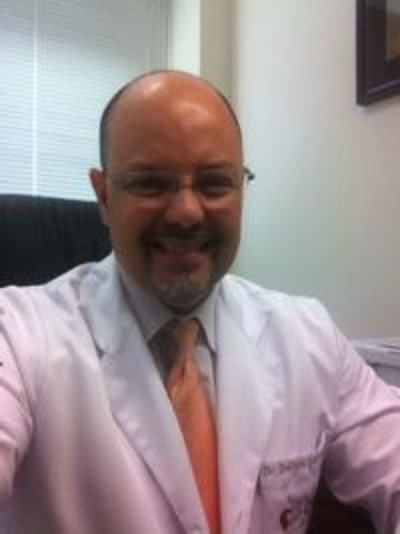
Journal of Women Health Care and Issues By the present mail, I want to say thank to you and tour colleagues for facilitating my published article. Specially thank you for the peer review process, support from the editorial office. I appreciate positively the quality of your journal.
Journal of Clinical Research and Reports I would be very delighted to submit my testimonial regarding the reviewer board and the editorial office. The reviewer board were accurate and helpful regarding any modifications for my manuscript. And the editorial office were very helpful and supportive in contacting and monitoring with any update and offering help. It was my pleasure to contribute with your promising Journal and I am looking forward for more collaboration.

We would like to thank the Journal of Thoracic Disease and Cardiothoracic Surgery because of the services they provided us for our articles. The peer-review process was done in a very excellent time manner, and the opinions of the reviewers helped us to improve our manuscript further. The editorial office had an outstanding correspondence with us and guided us in many ways. During a hard time of the pandemic that is affecting every one of us tremendously, the editorial office helped us make everything easier for publishing scientific work. Hope for a more scientific relationship with your Journal.

The peer-review process which consisted high quality queries on the paper. I did answer six reviewers’ questions and comments before the paper was accepted. The support from the editorial office is excellent.

Journal of Neuroscience and Neurological Surgery. I had the experience of publishing a research article recently. The whole process was simple from submission to publication. The reviewers made specific and valuable recommendations and corrections that improved the quality of my publication. I strongly recommend this Journal.
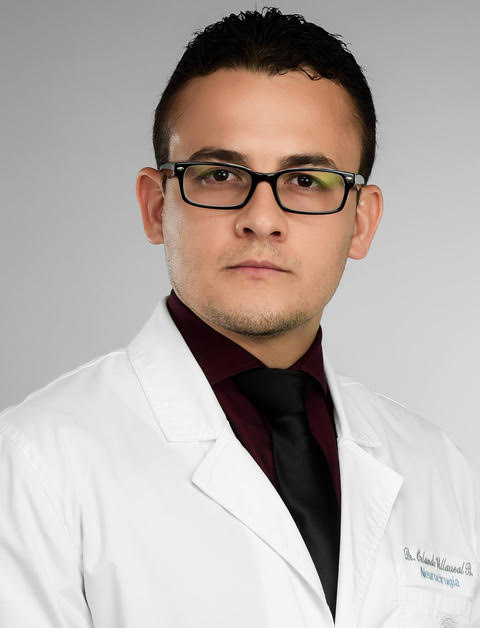
Dr. Katarzyna Byczkowska My testimonial covering: "The peer review process is quick and effective. The support from the editorial office is very professional and friendly. Quality of the Clinical Cardiology and Cardiovascular Interventions is scientific and publishes ground-breaking research on cardiology that is useful for other professionals in the field.

Thank you most sincerely, with regard to the support you have given in relation to the reviewing process and the processing of my article entitled "Large Cell Neuroendocrine Carcinoma of The Prostate Gland: A Review and Update" for publication in your esteemed Journal, Journal of Cancer Research and Cellular Therapeutics". The editorial team has been very supportive.

Testimony of Journal of Clinical Otorhinolaryngology: work with your Reviews has been a educational and constructive experience. The editorial office were very helpful and supportive. It was a pleasure to contribute to your Journal.

Dr. Bernard Terkimbi Utoo, I am happy to publish my scientific work in Journal of Women Health Care and Issues (JWHCI). The manuscript submission was seamless and peer review process was top notch. I was amazed that 4 reviewers worked on the manuscript which made it a highly technical, standard and excellent quality paper. I appreciate the format and consideration for the APC as well as the speed of publication. It is my pleasure to continue with this scientific relationship with the esteem JWHCI.

This is an acknowledgment for peer reviewers, editorial board of Journal of Clinical Research and Reports. They show a lot of consideration for us as publishers for our research article “Evaluation of the different factors associated with side effects of COVID-19 vaccination on medical students, Mutah university, Al-Karak, Jordan”, in a very professional and easy way. This journal is one of outstanding medical journal.
Dear Hao Jiang, to Journal of Nutrition and Food Processing We greatly appreciate the efficient, professional and rapid processing of our paper by your team. If there is anything else we should do, please do not hesitate to let us know. On behalf of my co-authors, we would like to express our great appreciation to editor and reviewers.

As an author who has recently published in the journal "Brain and Neurological Disorders". I am delighted to provide a testimonial on the peer review process, editorial office support, and the overall quality of the journal. The peer review process at Brain and Neurological Disorders is rigorous and meticulous, ensuring that only high-quality, evidence-based research is published. The reviewers are experts in their fields, and their comments and suggestions were constructive and helped improve the quality of my manuscript. The review process was timely and efficient, with clear communication from the editorial office at each stage. The support from the editorial office was exceptional throughout the entire process. The editorial staff was responsive, professional, and always willing to help. They provided valuable guidance on formatting, structure, and ethical considerations, making the submission process seamless. Moreover, they kept me informed about the status of my manuscript and provided timely updates, which made the process less stressful. The journal Brain and Neurological Disorders is of the highest quality, with a strong focus on publishing cutting-edge research in the field of neurology. The articles published in this journal are well-researched, rigorously peer-reviewed, and written by experts in the field. The journal maintains high standards, ensuring that readers are provided with the most up-to-date and reliable information on brain and neurological disorders. In conclusion, I had a wonderful experience publishing in Brain and Neurological Disorders. The peer review process was thorough, the editorial office provided exceptional support, and the journal's quality is second to none. I would highly recommend this journal to any researcher working in the field of neurology and brain disorders.

Dear Agrippa Hilda, Journal of Neuroscience and Neurological Surgery, Editorial Coordinator, I trust this message finds you well. I want to extend my appreciation for considering my article for publication in your esteemed journal. I am pleased to provide a testimonial regarding the peer review process and the support received from your editorial office. The peer review process for my paper was carried out in a highly professional and thorough manner. The feedback and comments provided by the authors were constructive and very useful in improving the quality of the manuscript. This rigorous assessment process undoubtedly contributes to the high standards maintained by your journal.
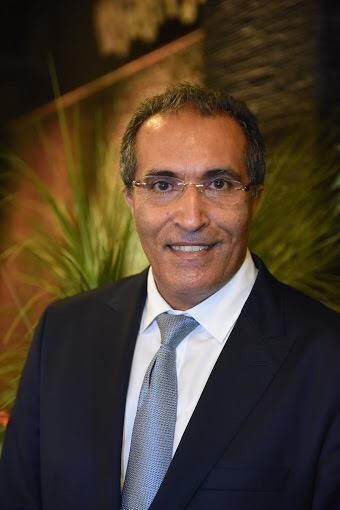
International Journal of Clinical Case Reports and Reviews. I strongly recommend to consider submitting your work to this high-quality journal. The support and availability of the Editorial staff is outstanding and the review process was both efficient and rigorous.
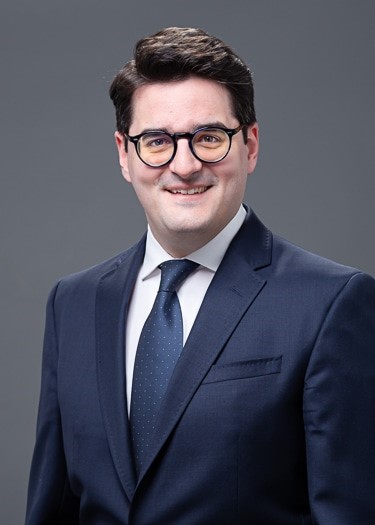
Thank you very much for publishing my Research Article titled “Comparing Treatment Outcome Of Allergic Rhinitis Patients After Using Fluticasone Nasal Spray And Nasal Douching" in the Journal of Clinical Otorhinolaryngology. As Medical Professionals we are immensely benefited from study of various informative Articles and Papers published in this high quality Journal. I look forward to enriching my knowledge by regular study of the Journal and contribute my future work in the field of ENT through the Journal for use by the medical fraternity. The support from the Editorial office was excellent and very prompt. I also welcome the comments received from the readers of my Research Article.

Dear Erica Kelsey, Editorial Coordinator of Cancer Research and Cellular Therapeutics Our team is very satisfied with the processing of our paper by your journal. That was fast, efficient, rigorous, but without unnecessary complications. We appreciated the very short time between the submission of the paper and its publication on line on your site.

I am very glad to say that the peer review process is very successful and fast and support from the Editorial Office. Therefore, I would like to continue our scientific relationship for a long time. And I especially thank you for your kindly attention towards my article. Have a good day!

"We recently published an article entitled “Influence of beta-Cyclodextrins upon the Degradation of Carbofuran Derivatives under Alkaline Conditions" in the Journal of “Pesticides and Biofertilizers” to show that the cyclodextrins protect the carbamates increasing their half-life time in the presence of basic conditions This will be very helpful to understand carbofuran behaviour in the analytical, agro-environmental and food areas. We greatly appreciated the interaction with the editor and the editorial team; we were particularly well accompanied during the course of the revision process, since all various steps towards publication were short and without delay".

I would like to express my gratitude towards you process of article review and submission. I found this to be very fair and expedient. Your follow up has been excellent. I have many publications in national and international journal and your process has been one of the best so far. Keep up the great work.
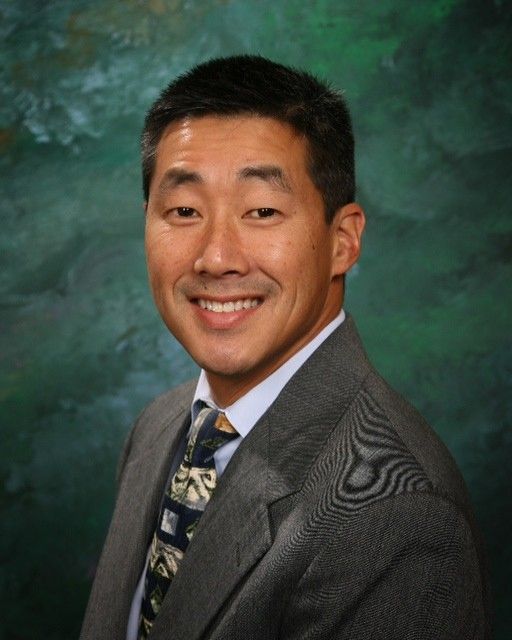
We are grateful for this opportunity to provide a glowing recommendation to the Journal of Psychiatry and Psychotherapy. We found that the editorial team were very supportive, helpful, kept us abreast of timelines and over all very professional in nature. The peer review process was rigorous, efficient and constructive that really enhanced our article submission. The experience with this journal remains one of our best ever and we look forward to providing future submissions in the near future.
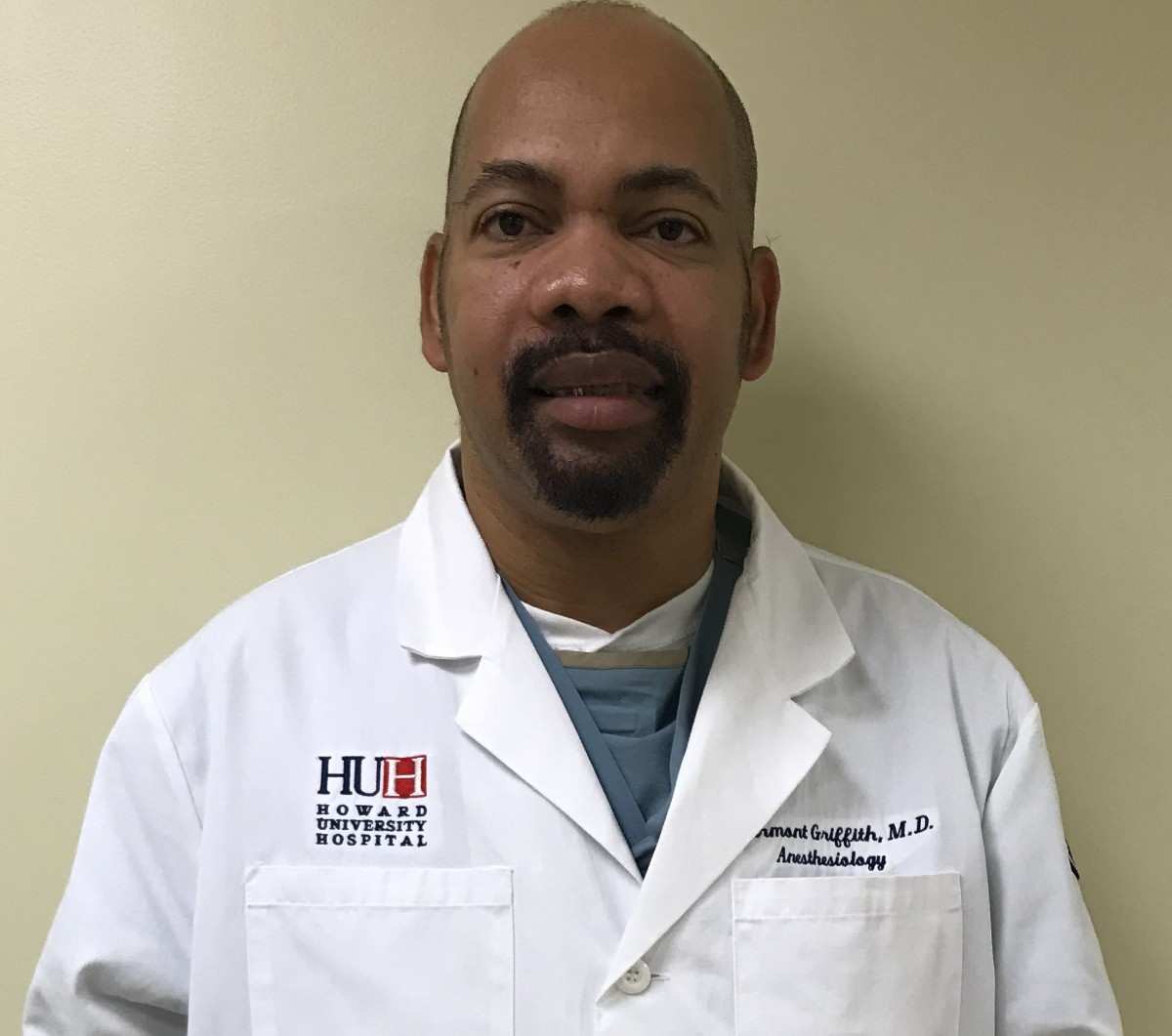
I am very pleased to serve as EBM of the journal, I hope many years of my experience in stem cells can help the journal from one way or another. As we know, stem cells hold great potential for regenerative medicine, which are mostly used to promote the repair response of diseased, dysfunctional or injured tissue using stem cells or their derivatives. I think Stem Cell Research and Therapeutics International is a great platform to publish and share the understanding towards the biology and translational or clinical application of stem cells.

I would like to give my testimony in the support I have got by the peer review process and to support the editorial office where they were of asset to support young author like me to be encouraged to publish their work in your respected journal and globalize and share knowledge across the globe. I really give my great gratitude to your journal and the peer review including the editorial office.

I am delighted to publish our manuscript entitled "A Perspective on Cocaine Induced Stroke - Its Mechanisms and Management" in the Journal of Neuroscience and Neurological Surgery. The peer review process, support from the editorial office, and quality of the journal are excellent. The manuscripts published are of high quality and of excellent scientific value. I recommend this journal very much to colleagues.

Dr.Tania Muñoz, My experience as researcher and author of a review article in The Journal Clinical Cardiology and Interventions has been very enriching and stimulating. The editorial team is excellent, performs its work with absolute responsibility and delivery. They are proactive, dynamic and receptive to all proposals. Supporting at all times the vast universe of authors who choose them as an option for publication. The team of review specialists, members of the editorial board, are brilliant professionals, with remarkable performance in medical research and scientific methodology. Together they form a frontline team that consolidates the JCCI as a magnificent option for the publication and review of high-level medical articles and broad collective interest. I am honored to be able to share my review article and open to receive all your comments.

“The peer review process of JPMHC is quick and effective. Authors are benefited by good and professional reviewers with huge experience in the field of psychology and mental health. The support from the editorial office is very professional. People to contact to are friendly and happy to help and assist any query authors might have. Quality of the Journal is scientific and publishes ground-breaking research on mental health that is useful for other professionals in the field”.
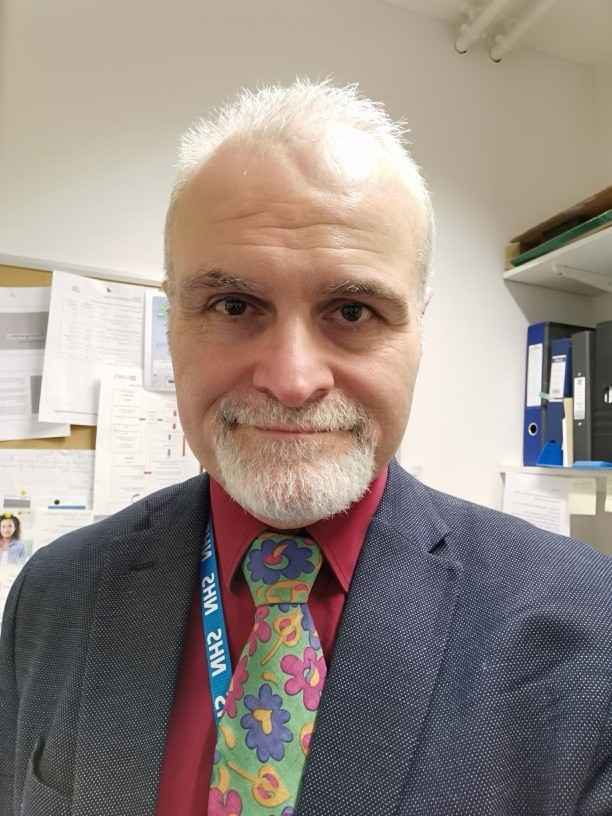
Dear editorial department: On behalf of our team, I hereby certify the reliability and superiority of the International Journal of Clinical Case Reports and Reviews in the peer review process, editorial support, and journal quality. Firstly, the peer review process of the International Journal of Clinical Case Reports and Reviews is rigorous, fair, transparent, fast, and of high quality. The editorial department invites experts from relevant fields as anonymous reviewers to review all submitted manuscripts. These experts have rich academic backgrounds and experience, and can accurately evaluate the academic quality, originality, and suitability of manuscripts. The editorial department is committed to ensuring the rigor of the peer review process, while also making every effort to ensure a fast review cycle to meet the needs of authors and the academic community. Secondly, the editorial team of the International Journal of Clinical Case Reports and Reviews is composed of a group of senior scholars and professionals with rich experience and professional knowledge in related fields. The editorial department is committed to assisting authors in improving their manuscripts, ensuring their academic accuracy, clarity, and completeness. Editors actively collaborate with authors, providing useful suggestions and feedback to promote the improvement and development of the manuscript. We believe that the support of the editorial department is one of the key factors in ensuring the quality of the journal. Finally, the International Journal of Clinical Case Reports and Reviews is renowned for its high- quality articles and strict academic standards. The editorial department is committed to publishing innovative and academically valuable research results to promote the development and progress of related fields. The International Journal of Clinical Case Reports and Reviews is reasonably priced and ensures excellent service and quality ratio, allowing authors to obtain high-level academic publishing opportunities in an affordable manner. I hereby solemnly declare that the International Journal of Clinical Case Reports and Reviews has a high level of credibility and superiority in terms of peer review process, editorial support, reasonable fees, and journal quality. Sincerely, Rui Tao.
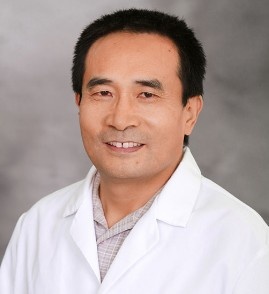
Clinical Cardiology and Cardiovascular Interventions I testity the covering of the peer review process, support from the editorial office, and quality of the journal.

Clinical Cardiology and Cardiovascular Interventions, we deeply appreciate the interest shown in our work and its publication. It has been a true pleasure to collaborate with you. The peer review process, as well as the support provided by the editorial office, have been exceptional, and the quality of the journal is very high, which was a determining factor in our decision to publish with you.
The peer reviewers process is quick and effective, the supports from editorial office is excellent, the quality of journal is high. I would like to collabroate with Internatioanl journal of Clinical Case Reports and Reviews journal clinically in the future time.

Clinical Cardiology and Cardiovascular Interventions, I would like to express my sincerest gratitude for the trust placed in our team for the publication in your journal. It has been a true pleasure to collaborate with you on this project. I am pleased to inform you that both the peer review process and the attention from the editorial coordination have been excellent. Your team has worked with dedication and professionalism to ensure that your publication meets the highest standards of quality. We are confident that this collaboration will result in mutual success, and we are eager to see the fruits of this shared effort.

Dear Dr. Jessica Magne, Editorial Coordinator 0f Clinical Cardiology and Cardiovascular Interventions, I hope this message finds you well. I want to express my utmost gratitude for your excellent work and for the dedication and speed in the publication process of my article titled "Navigating Innovation: Qualitative Insights on Using Technology for Health Education in Acute Coronary Syndrome Patients." I am very satisfied with the peer review process, the support from the editorial office, and the quality of the journal. I hope we can maintain our scientific relationship in the long term.
Dear Monica Gissare, - Editorial Coordinator of Nutrition and Food Processing. ¨My testimony with you is truly professional, with a positive response regarding the follow-up of the article and its review, you took into account my qualities and the importance of the topic¨.

Dear Dr. Jessica Magne, Editorial Coordinator 0f Clinical Cardiology and Cardiovascular Interventions, The review process for the article “The Handling of Anti-aggregants and Anticoagulants in the Oncologic Heart Patient Submitted to Surgery” was extremely rigorous and detailed. From the initial submission to the final acceptance, the editorial team at the “Journal of Clinical Cardiology and Cardiovascular Interventions” demonstrated a high level of professionalism and dedication. The reviewers provided constructive and detailed feedback, which was essential for improving the quality of our work. Communication was always clear and efficient, ensuring that all our questions were promptly addressed. The quality of the “Journal of Clinical Cardiology and Cardiovascular Interventions” is undeniable. It is a peer-reviewed, open-access publication dedicated exclusively to disseminating high-quality research in the field of clinical cardiology and cardiovascular interventions. The journal's impact factor is currently under evaluation, and it is indexed in reputable databases, which further reinforces its credibility and relevance in the scientific field. I highly recommend this journal to researchers looking for a reputable platform to publish their studies.
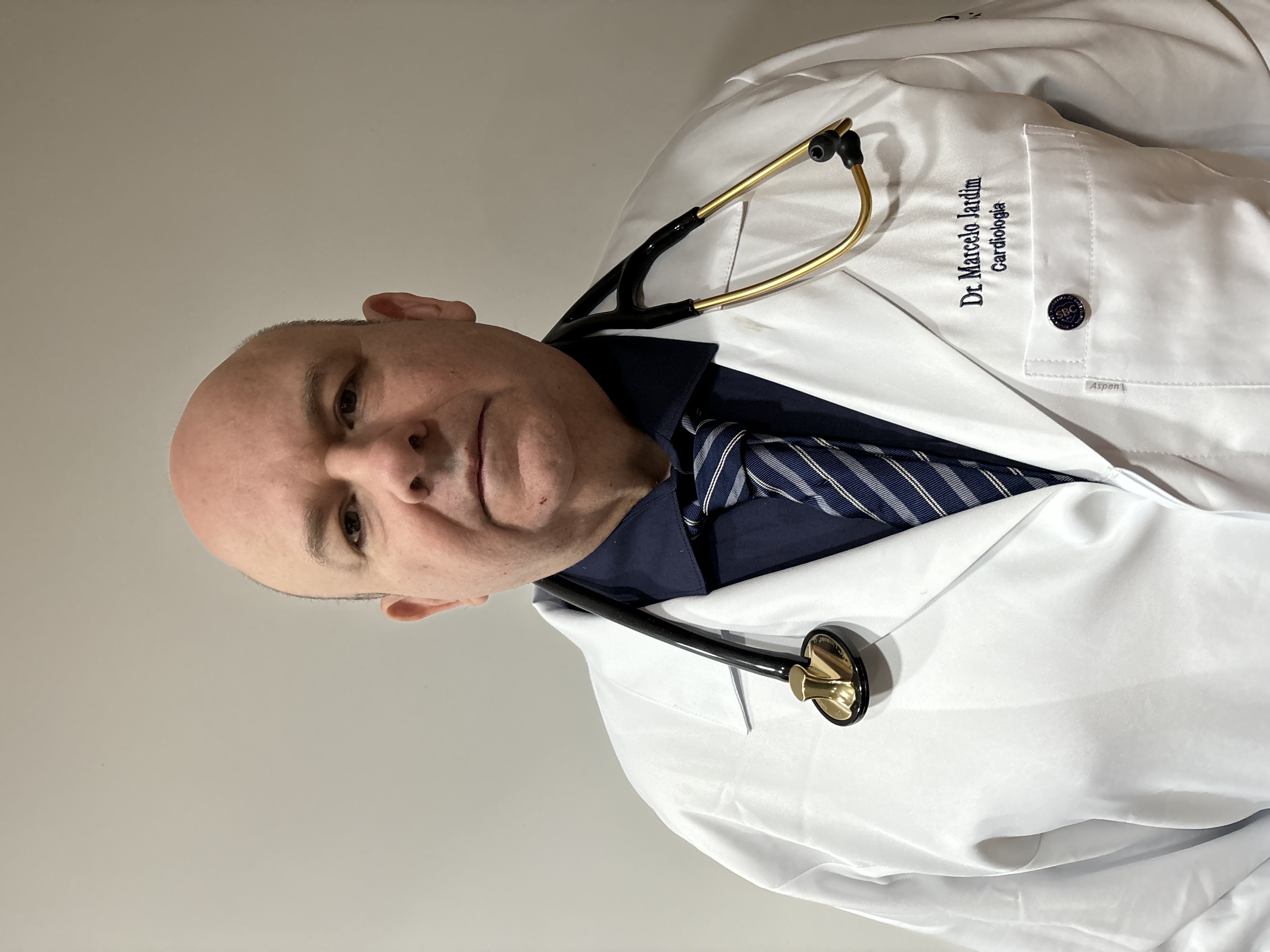
Dear Editorial Coordinator of the Journal of Nutrition and Food Processing! "I would like to thank the Journal of Nutrition and Food Processing for including and publishing my article. The peer review process was very quick, movement and precise. The Editorial Board has done an extremely conscientious job with much help, valuable comments and advices. I find the journal very valuable from a professional point of view, thank you very much for allowing me to be part of it and I would like to participate in the future!”

Dealing with The Journal of Neurology and Neurological Surgery was very smooth and comprehensive. The office staff took time to address my needs and the response from editors and the office was prompt and fair. I certainly hope to publish with this journal again.Their professionalism is apparent and more than satisfactory. Susan Weiner

My Testimonial Covering as fellowing: Lin-Show Chin. The peer reviewers process is quick and effective, the supports from editorial office is excellent, the quality of journal is high. I would like to collabroate with Internatioanl journal of Clinical Case Reports and Reviews.

My experience publishing in Psychology and Mental Health Care was exceptional. The peer review process was rigorous and constructive, with reviewers providing valuable insights that helped enhance the quality of our work. The editorial team was highly supportive and responsive, making the submission process smooth and efficient. The journal's commitment to high standards and academic rigor makes it a respected platform for quality research. I am grateful for the opportunity to publish in such a reputable journal.
My experience publishing in International Journal of Clinical Case Reports and Reviews was exceptional. I Come forth to Provide a Testimonial Covering the Peer Review Process and the editorial office for the Professional and Impartial Evaluation of the Manuscript.
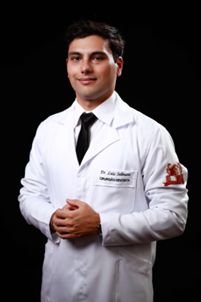
I would like to offer my testimony in the support. I have received through the peer review process and support the editorial office where they are to support young authors like me, encourage them to publish their work in your esteemed journals, and globalize and share knowledge globally. I really appreciate your journal, peer review, and editorial office.
Dear Agrippa Hilda- Editorial Coordinator of Journal of Neuroscience and Neurological Surgery, "The peer review process was very quick and of high quality, which can also be seen in the articles in the journal. The collaboration with the editorial office was very good."

I would like to express my sincere gratitude for the support and efficiency provided by the editorial office throughout the publication process of my article, “Delayed Vulvar Metastases from Rectal Carcinoma: A Case Report.” I greatly appreciate the assistance and guidance I received from your team, which made the entire process smooth and efficient. The peer review process was thorough and constructive, contributing to the overall quality of the final article. I am very grateful for the high level of professionalism and commitment shown by the editorial staff, and I look forward to maintaining a long-term collaboration with the International Journal of Clinical Case Reports and Reviews.
To Dear Erin Aust, I would like to express my heartfelt appreciation for the opportunity to have my work published in this esteemed journal. The entire publication process was smooth and well-organized, and I am extremely satisfied with the final result. The Editorial Team demonstrated the utmost professionalism, providing prompt and insightful feedback throughout the review process. Their clear communication and constructive suggestions were invaluable in enhancing my manuscript, and their meticulous attention to detail and dedication to quality are truly commendable. Additionally, the support from the Editorial Office was exceptional. From the initial submission to the final publication, I was guided through every step of the process with great care and professionalism. The team's responsiveness and assistance made the entire experience both easy and stress-free. I am also deeply impressed by the quality and reputation of the journal. It is an honor to have my research featured in such a respected publication, and I am confident that it will make a meaningful contribution to the field.

"I am grateful for the opportunity of contributing to [International Journal of Clinical Case Reports and Reviews] and for the rigorous review process that enhances the quality of research published in your esteemed journal. I sincerely appreciate the time and effort of your team who have dedicatedly helped me in improvising changes and modifying my manuscript. The insightful comments and constructive feedback provided have been invaluable in refining and strengthening my work".

I thank the ‘Journal of Clinical Research and Reports’ for accepting this article for publication. This is a rigorously peer reviewed journal which is on all major global scientific data bases. I note the review process was prompt, thorough and professionally critical. It gave us an insight into a number of important scientific/statistical issues. The review prompted us to review the relevant literature again and look at the limitations of the study. The peer reviewers were open, clear in the instructions and the editorial team was very prompt in their communication. This journal certainly publishes quality research articles. I would recommend the journal for any future publications.

Dear Jessica Magne, with gratitude for the joint work. Fast process of receiving and processing the submitted scientific materials in “Clinical Cardiology and Cardiovascular Interventions”. High level of competence of the editors with clear and correct recommendations and ideas for enriching the article.

We found the peer review process quick and positive in its input. The support from the editorial officer has been very agile, always with the intention of improving the article and taking into account our subsequent corrections.

My article, titled 'No Way Out of the Smartphone Epidemic Without Considering the Insights of Brain Research,' has been republished in the International Journal of Clinical Case Reports and Reviews. The review process was seamless and professional, with the editors being both friendly and supportive. I am deeply grateful for their efforts.
To Dear Erin Aust – Editorial Coordinator of Journal of General Medicine and Clinical Practice! I declare that I am absolutely satisfied with your work carried out with great competence in following the manuscript during the various stages from its receipt, during the revision process to the final acceptance for publication. Thank Prof. Elvira Farina

Dear Jessica, and the super professional team of the ‘Clinical Cardiology and Cardiovascular Interventions’ I am sincerely grateful to the coordinated work of the journal team for the no problem with the submission of my manuscript: “Cardiometabolic Disorders in A Pregnant Woman with Severe Preeclampsia on the Background of Morbid Obesity (Case Report).” The review process by 5 experts was fast, and the comments were professional, which made it more specific and academic, and the process of publication and presentation of the article was excellent. I recommend that my colleagues publish articles in this journal, and I am interested in further scientific cooperation. Sincerely and best wishes, Dr. Oleg Golyanovskiy.
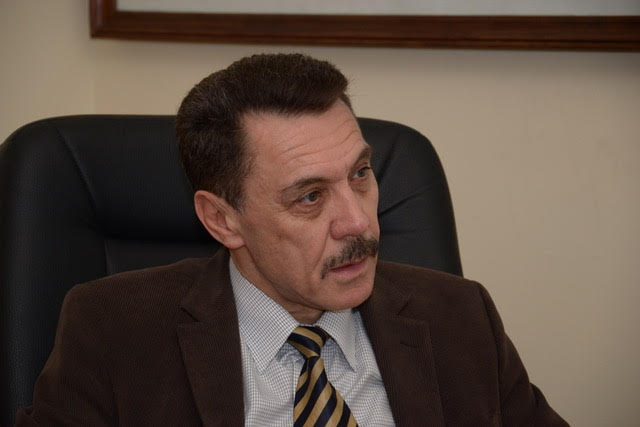
Dear Ashley Rosa, Editorial Coordinator of the journal - Psychology and Mental Health Care. " The process of obtaining publication of my article in the Psychology and Mental Health Journal was positive in all areas. The peer review process resulted in a number of valuable comments, the editorial process was collaborative and timely, and the quality of this journal has been quickly noticed, resulting in alternative journals contacting me to publish with them." Warm regards, Susan Anne Smith, PhD. Australian Breastfeeding Association.

Dear Jessica Magne, Editorial Coordinator, Clinical Cardiology and Cardiovascular Interventions, Auctores Publishing LLC. I appreciate the journal (JCCI) editorial office support, the entire team leads were always ready to help, not only on technical front but also on thorough process. Also, I should thank dear reviewers’ attention to detail and creative approach to teach me and bring new insights by their comments. Surely, more discussions and introduction of other hemodynamic devices would provide better prevention and management of shock states. Your efforts and dedication in presenting educational materials in this journal are commendable. Best wishes from, Farahnaz Fallahian.
Dear Maria Emerson, Editorial Coordinator, International Journal of Clinical Case Reports and Reviews, Auctores Publishing LLC. I am delighted to have published our manuscript, "Acute Colonic Pseudo-Obstruction (ACPO): A rare but serious complication following caesarean section." I want to thank the editorial team, especially Maria Emerson, for their prompt review of the manuscript, quick responses to queries, and overall support. Yours sincerely Dr. Victor Olagundoye.

Dear Ashley Rosa, Editorial Coordinator, International Journal of Clinical Case Reports and Reviews. Many thanks for publishing this manuscript after I lost confidence the editors were most helpful, more than other journals Best wishes from, Susan Anne Smith, PhD. Australian Breastfeeding Association.

Dear Agrippa Hilda, Editorial Coordinator, Journal of Neuroscience and Neurological Surgery. The entire process including article submission, review, revision, and publication was extremely easy. The journal editor was prompt and helpful, and the reviewers contributed to the quality of the paper. Thank you so much! Eric Nussbaum, MD
Dr Hala Al Shaikh This is to acknowledge that the peer review process for the article ’ A Novel Gnrh1 Gene Mutation in Four Omani Male Siblings, Presentation and Management ’ sent to the International Journal of Clinical Case Reports and Reviews was quick and smooth. The editorial office was prompt with easy communication.
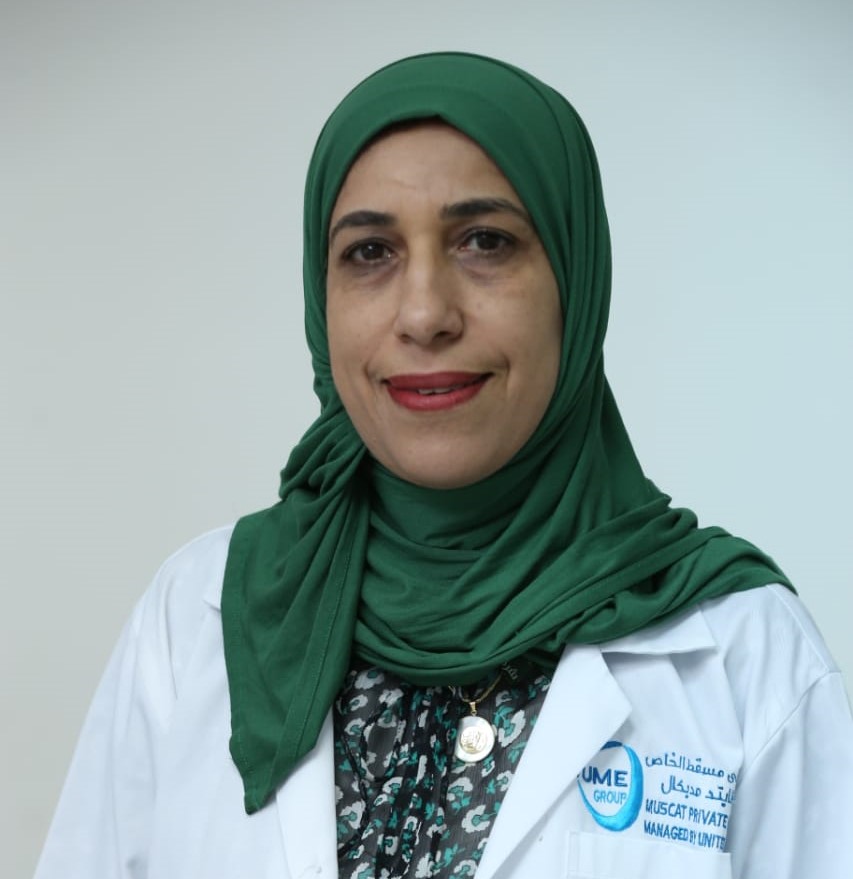
Dear Erin Aust, Editorial Coordinator, Journal of General Medicine and Clinical Practice. We are pleased to share our experience with the “Journal of General Medicine and Clinical Practice”, following the successful publication of our article. The peer review process was thorough and constructive, helping to improve the clarity and quality of the manuscript. We are especially thankful to Ms. Erin Aust, the Editorial Coordinator, for her prompt communication and continuous support throughout the process. Her professionalism ensured a smooth and efficient publication experience. The journal upholds high editorial standards, and we highly recommend it to fellow researchers seeking a credible platform for their work. Best wishes By, Dr. Rakhi Mishra.

Dear Jessica Magne, Editorial Coordinator, Clinical Cardiology and Cardiovascular Interventions, Auctores Publishing LLC. The peer review process of the journal of Clinical Cardiology and Cardiovascular Interventions was excellent and fast, as was the support of the editorial office and the quality of the journal. Kind regards Walter F. Riesen Prof. Dr. Dr. h.c. Walter F. Riesen.

Dear Ashley Rosa, Editorial Coordinator, International Journal of Clinical Case Reports and Reviews, Auctores Publishing LLC. Thank you for publishing our article, Exploring Clozapine's Efficacy in Managing Aggression: A Multiple Single-Case Study in Forensic Psychiatry in the international journal of clinical case reports and reviews. We found the peer review process very professional and efficient. The comments were constructive, and the whole process was efficient. On behalf of the co-authors, I would like to thank you for publishing this article. With regards, Dr. Jelle R. Lettinga.

Dear Clarissa Eric, Editorial Coordinator, Journal of Clinical Case Reports and Studies, I would like to express my deep admiration for the exceptional professionalism demonstrated by your journal. I am thoroughly impressed by the speed of the editorial process, the substantive and insightful reviews, and the meticulous preparation of the manuscript for publication. Additionally, I greatly appreciate the courteous and immediate responses from your editorial office to all my inquiries. Best Regards, Dariusz Ziora

Dear Chrystine Mejia, Editorial Coordinator, Journal of Neurodegeneration and Neurorehabilitation, Auctores Publishing LLC, We would like to thank the editorial team for the smooth and high-quality communication leading up to the publication of our article in the Journal of Neurodegeneration and Neurorehabilitation. The reviewers have extensive knowledge in the field, and their relevant questions helped to add value to our publication. Kind regards, Dr. Ravi Shrivastava.

Dear Clarissa Eric, Editorial Coordinator, Journal of Clinical Case Reports and Studies, Auctores Publishing LLC, USA Office: +1-(302)-520-2644. I would like to express my sincere appreciation for the efficient and professional handling of my case report by the ‘Journal of Clinical Case Reports and Studies’. The peer review process was not only fast but also highly constructive—the reviewers’ comments were clear, relevant, and greatly helped me improve the quality and clarity of my manuscript. I also received excellent support from the editorial office throughout the process. Communication was smooth and timely, and I felt well guided at every stage, from submission to publication. The overall quality and rigor of the journal are truly commendable. I am pleased to have published my work with Journal of Clinical Case Reports and Studies, and I look forward to future opportunities for collaboration. Sincerely, Aline Tollet, UCLouvain.

Dear Ms. Mayra Duenas, Editorial Coordinator, International Journal of Clinical Case Reports and Reviews. “The International Journal of Clinical Case Reports and Reviews represented the “ideal house” to share with the research community a first experience with the use of the Simeox device for speech rehabilitation. High scientific reputation and attractive website communication were first determinants for the selection of this Journal, and the following submission process exceeded expectations: fast but highly professional peer review, great support by the editorial office, elegant graphic layout. Exactly what a dynamic research team - also composed by allied professionals - needs!" From, Chiara Beccaluva, PT - Italy.

Dear Maria Emerson, Editorial Coordinator, we have deeply appreciated the professionalism demonstrated by the International Journal of Clinical Case Reports and Reviews. The reviewers have extensive knowledge of our field and have been very efficient and fast in supporting the process. I am really looking forward to further collaboration. Thanks. Best regards, Dr. Claudio Ligresti
Dear Chrystine Mejia, Editorial Coordinator, Journal of Neurodegeneration and Neurorehabilitation. “The peer review process was efficient and constructive, and the editorial office provided excellent communication and support throughout. The journal ensures scientific rigor and high editorial standards, while also offering a smooth and timely publication process. We sincerely appreciate the work of the editorial team in facilitating the dissemination of innovative approaches such as the Bonori Method.” Best regards, Dr. Matteo Bonori.
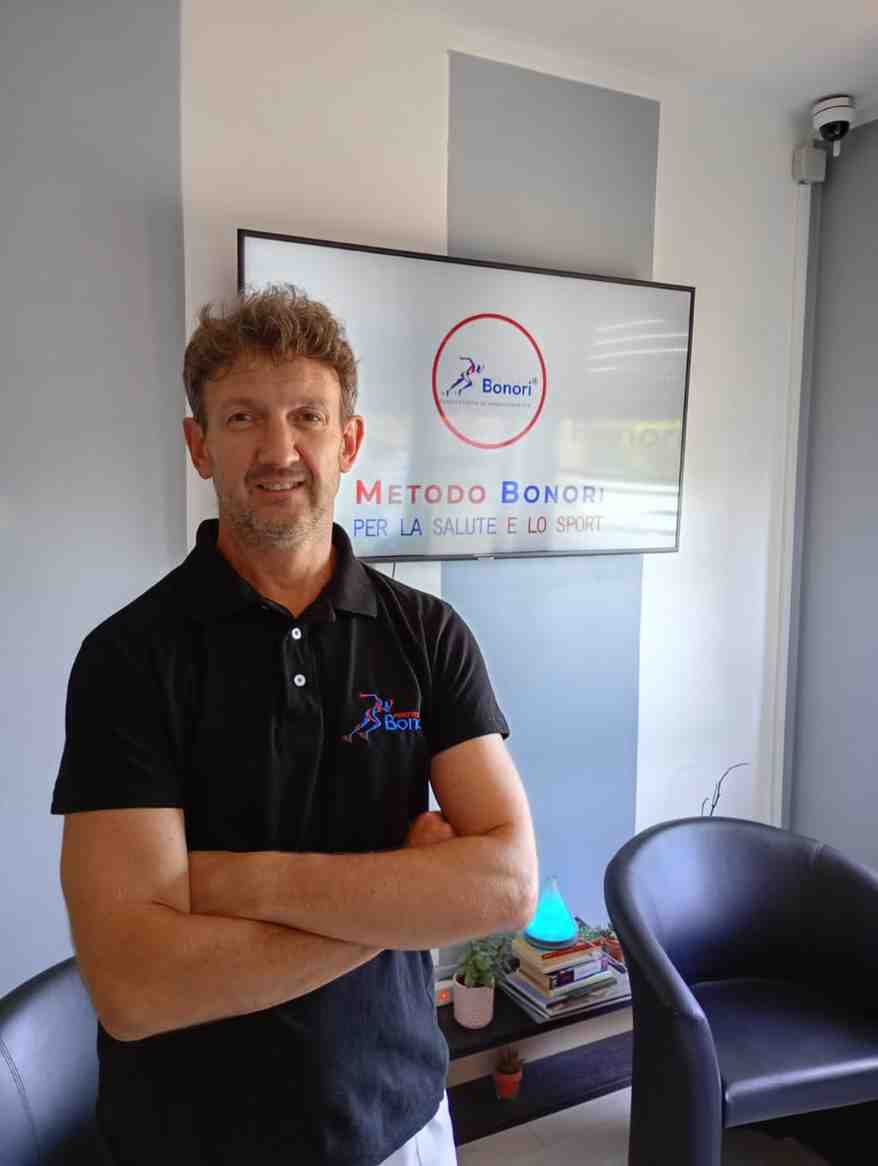
I recommend without hesitation submitting relevant papers on medical decision making to the International Journal of Clinical Case Reports and Reviews. I am very grateful to the editorial staff. Maria Emerson was a pleasure to communicate with. The time from submission to publication was an extremely short 3 weeks. The editorial staff submitted the paper to three reviewers. Two of the reviewers commented positively on the value of publishing the paper. The editorial staff quickly recognized the third reviewer’s comments as an unjust attempt to reject the paper. I revised the paper as recommended by the first two reviewers.

Dear Maria Emerson, Editorial Coordinator, Journal of Clinical Research and Reports. Thank you for publishing our case report: "Clinical Case of Effective Fetal Stem Cells Treatment in a Patient with Autism Spectrum Disorder" within the "Journal of Clinical Research and Reports" being submitted by the team of EmCell doctors from Kyiv, Ukraine. We much appreciate a professional and transparent peer-review process from Auctores. All research Doctors are so grateful to your Editorial Office and Auctores Publishing support! I amiably wish our article publication maintained a top quality of your International Scientific Journal. My best wishes for a prosperity of the Journal of Clinical Research and Reports. Hope our scientific relationship and cooperation will remain long lasting. Thank you very much indeed. Kind regards, Dr. Andriy Sinelnyk Cell Therapy Center EmCell
